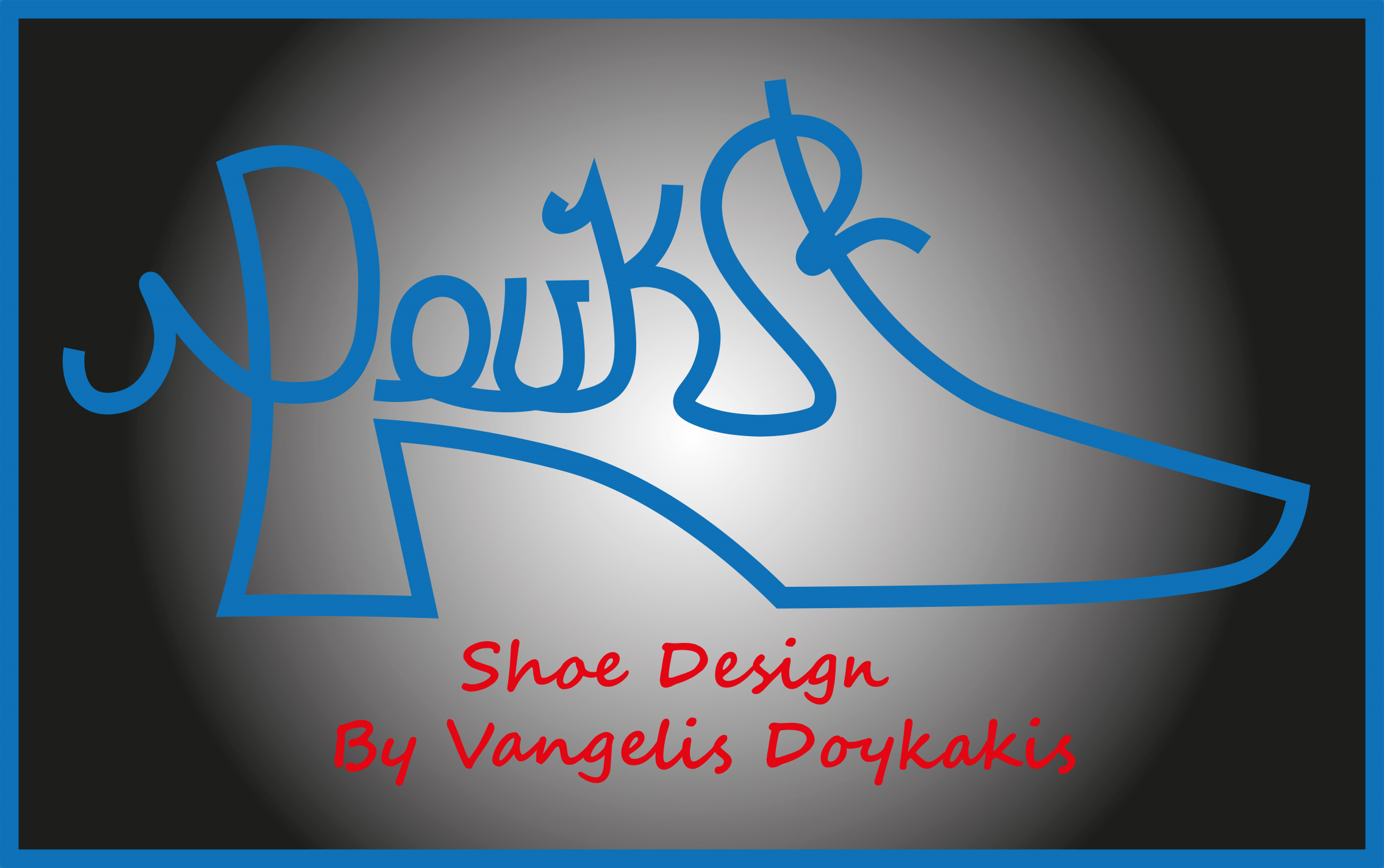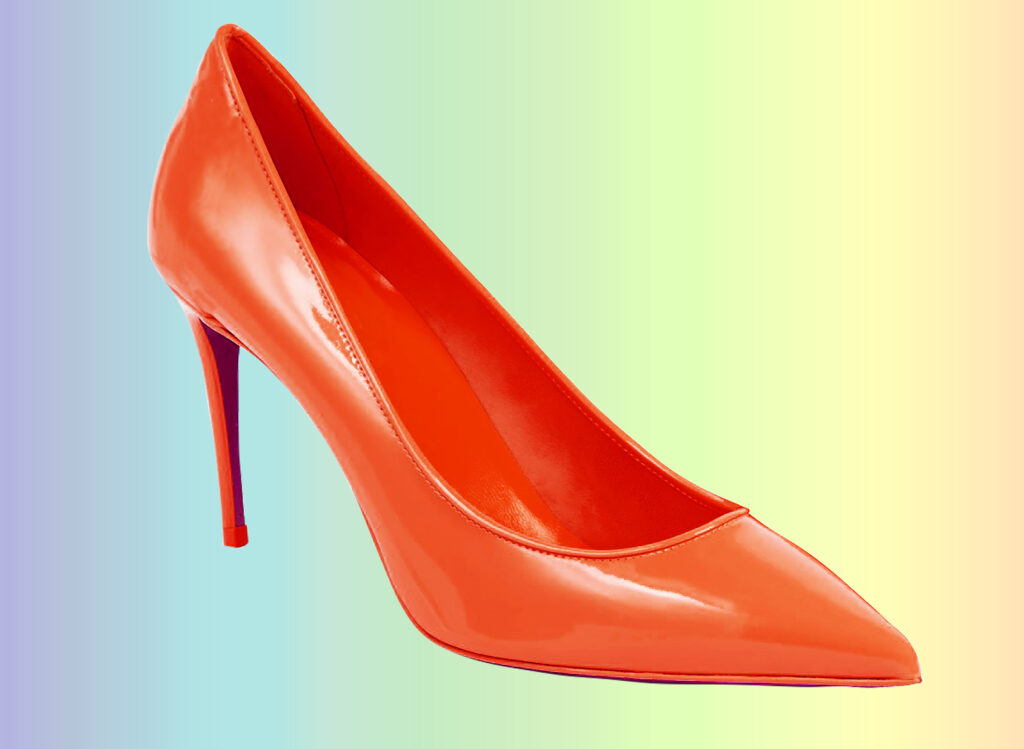
court shoes
The court shoe, if I may say so, is the most "feminine" type of shoe. It projects the uncovered instep and in combination with a high heel, it makes the female leg look taller.
The design of such a shoe is simpler than the others, as far as the pattern is concerned, but it needs more artwork on the line.
The last to be used is different than the others; the lines for the classic last are standard and I would say timeless.
The correct placement of the main axis is crucial for a proper design, as well as the distance of the lines both from the toe tip and the edge to the side of the last
In addition to the classic, all-around leather pumps, there are the sling backs, the peep toes, the pumps with separate vamp, the pumps with a secret stitching, etc.
In my book, the guidelines for the pump include: the dimensions of the correct last in all points (detailed table), the method of measurement, how to draw the correct lines of the classic pump, every little detail and -if you want- secrets, from my long experience for all types of lasts.
The detailed analysis of the designs, along with their patterns in several representative versions, reveal all the right moves that have to be made.
Adherence to all those guidelines guarantees a proper design, a perfect fit on the foot and zero problems in the manufacturing process.
Pp 7-110, 12 representative pump designs are analyzed.

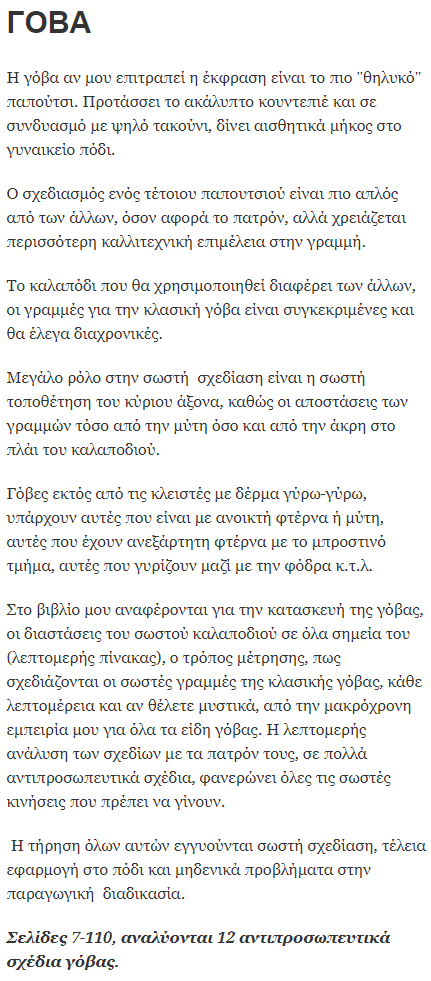
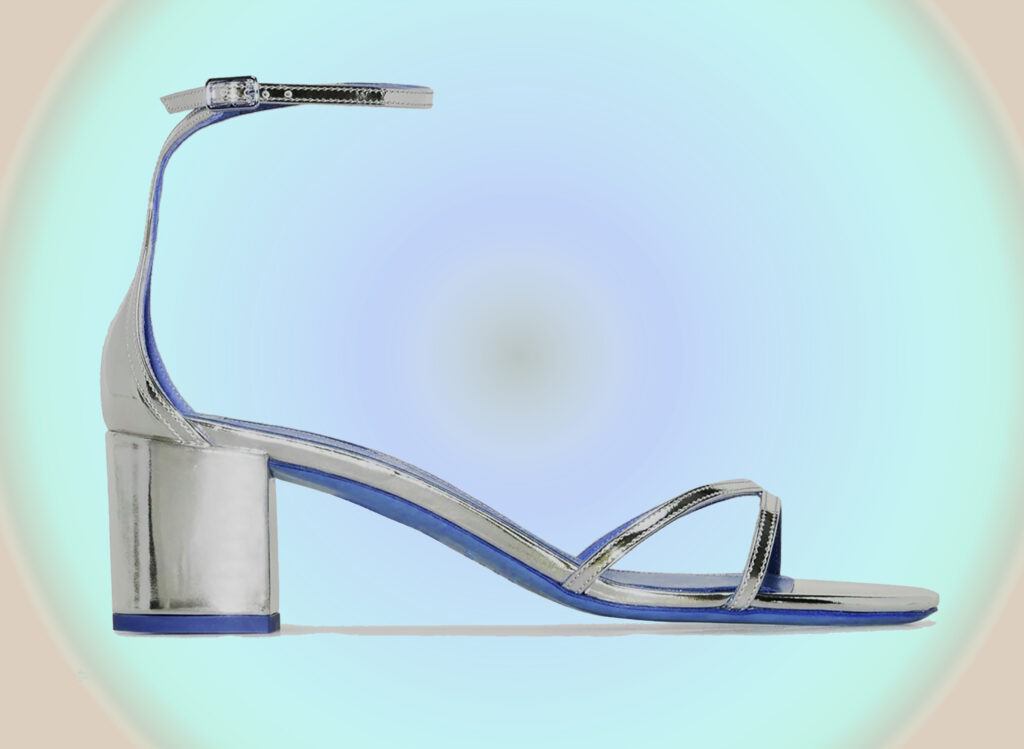
Sandals
The sandal is considered to be the oldest kind of footwear, coming from the ancient years. It leaves the foot more uncovered than all other shoes, as straps are mainly used for its manufacture. The straps can be either artistic or simple.
The design may vary from simple with a few straps to very complex and difficult one, with pieces of leather and a combination of straps.
The last we use to make the sandal has unique length and width dimensions because most of the foot is exposed.
Possible mistakes are more than obvious; imagine how ugly a sandal would appear with straps that don't fit the foot at all. If the instep is very wide, the foot moves towards the toe and comes out of the bottom.
Of course, the design of the bottom -the background around the foot- is very crucial. Here, more attention should be paid than any other type of shoe.
Another kind of sandal is the flip-flop, which has also its own rules.
All the details and dimensions related to the sandal last, bottom shape, pad shape, flip-flop bottom shape, position of the hole between the first and second toe and tables with a detailed analysis of the bottom and last distances are all described in my book.
Pp 254-300, 8 representative sandal and flip-flop designs are analyzed.

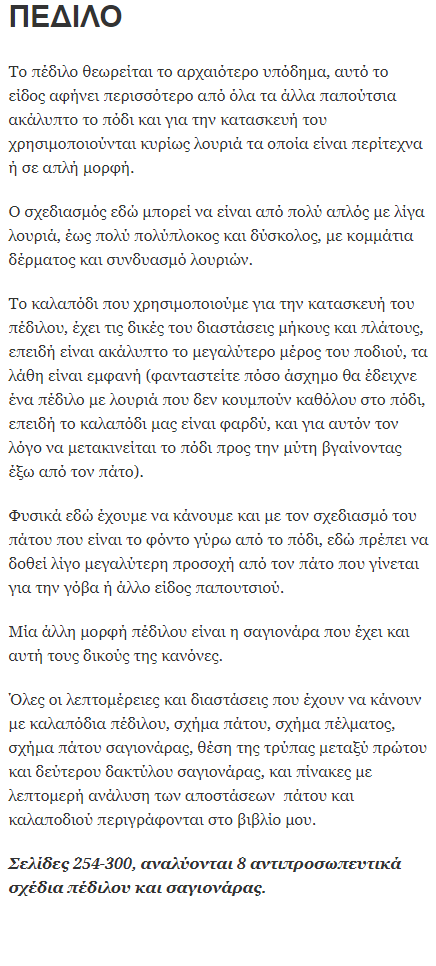
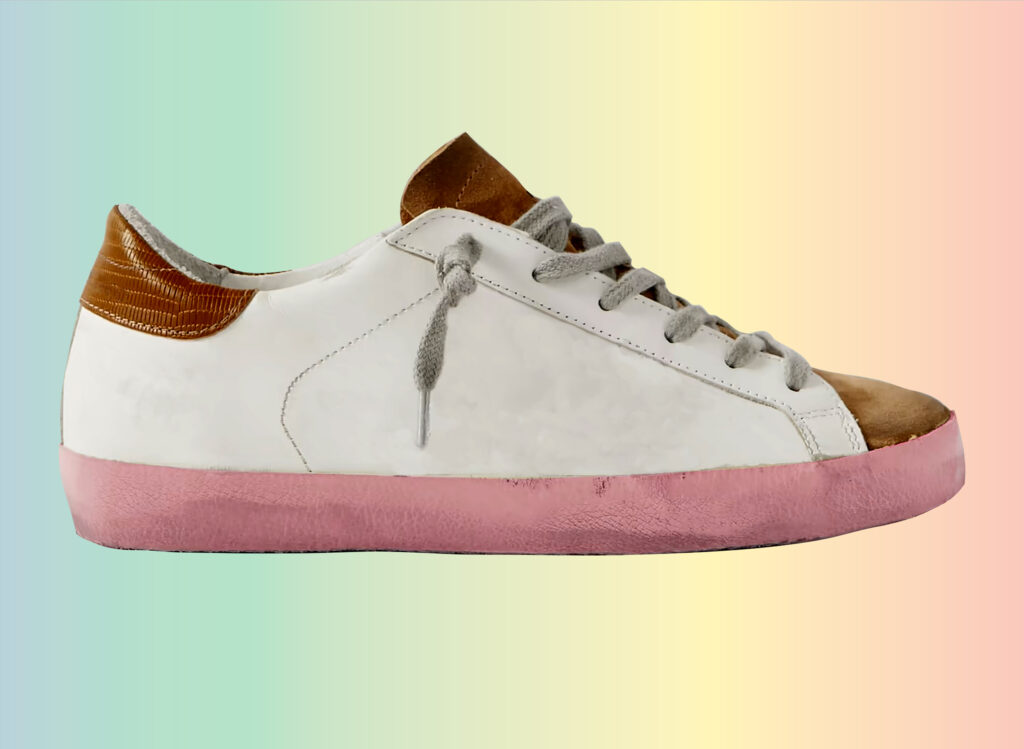
Sneakers
Rubber sole shoes that are soft to walk on, regardless of design or manufacturing material, are called sneakers. The design of these shoes is more complex and obviously more difficult. Besides the soft soles that offer the feeling of a sports shoe, soles of leather or any other material can be used.
The designs usually cover the entire instep. Το insert the foot in the sneaker, laces, zippers, straps with buckles, etc. are used. This is also the reason why this type of shoe covers a greater percentage of the foot than any other shoe type, without having evident application defects.
The sneaker last has its own rules and is quite similar to the pump. In my book, there are guidelines for designing sneakers; the dimensions of the proper last in all parts (detailed table), how to measure accurately, how to design with my own method, every detail and secret from my long experience for all shoe types.
The detailed analysis of the designs, along with their patterns in different representative versions, reveal all the right moves that have to be made.
Adherence to all those guidelines, guarantees a proper design, a perfect fit on the foot and zero problems in the manufacture process.
Pp 111-253, 16 representative sneaker designs are analyzed.

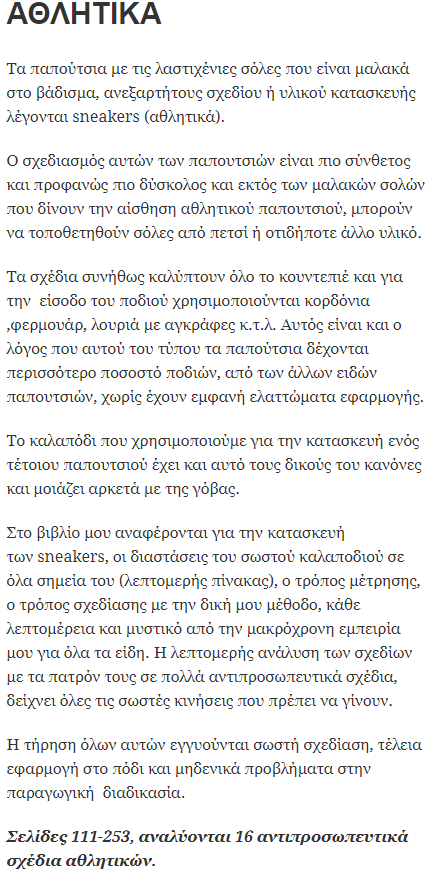
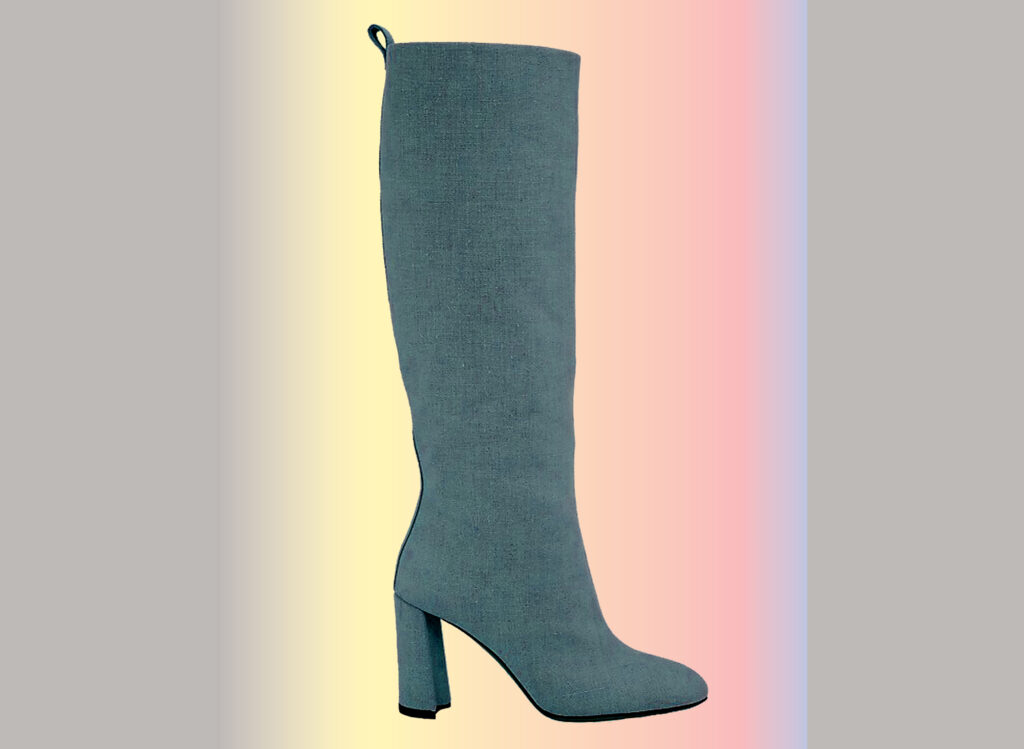
BootS
This is the type of shoe that covers the foot from toe-to-calf, while the height is determined by personal choice, fashion trends, etc. Boots based on the calf width can be classified into no-zipper boots, zipper boots and rubber boots. The design is more complex, as there are different rules for each of the three categories.
An important factor for the proper design is the accurate placement of both the main and the vertical axes, as well as the distances of the width lines, both at the bottom of the ankle and at the top of the calf. All these steps are different in each category.
In my book, the guidelines for the boot include: the dimensions of the proper lasts, (each category has a corresponding last) in all parts with detailed tables, the method of measurement, how to design with my own method, every detail and secret from my long experience for all three kinds.
The detailed analysis of the designs, along with their patterns in different representative versions, reveal all the right moves that have to be made. We must mention that in the book, there is a special chapter that describes the actions taken when the front part of the boot is continuous (crimping).
Adherence to all those guidelines guarantees a proper design, a perfect fit on the foot and zero problems in the production process.
Pp 335-426, 11 representative designs are analyzed.

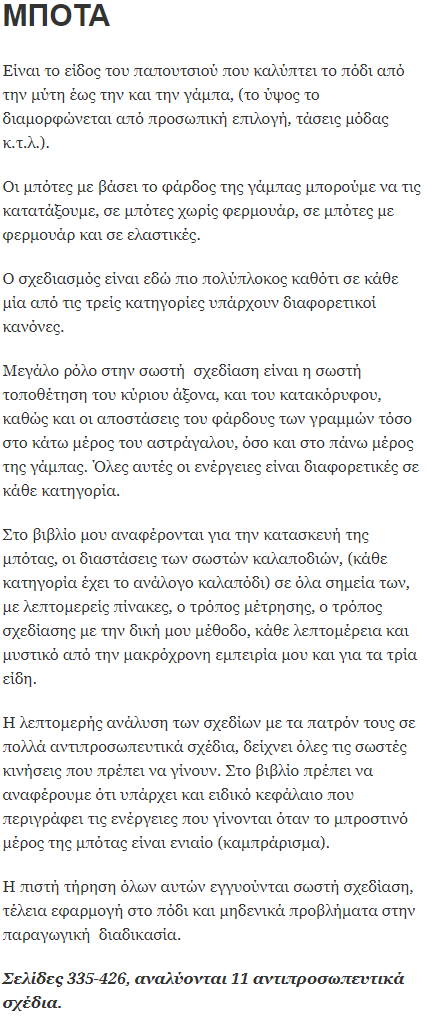

 Loafers
Loafers
Loafers are the shoes characterized by the oval piece placed after the toe-usually hand sewn- and the softness of the leather material.
In this category we have two types of designs:
- Shoes that need lasting.
- Shoes that have been sewn and are then applied on the last.
In the second category there are pleats around the oval piece in the classic way, and two ways to reduce the pleats if our leather is a little hard.
In my book I refer to both categories, presenting their patterns step by step.
Pp 427-465, 3 representative designs are analyzed.

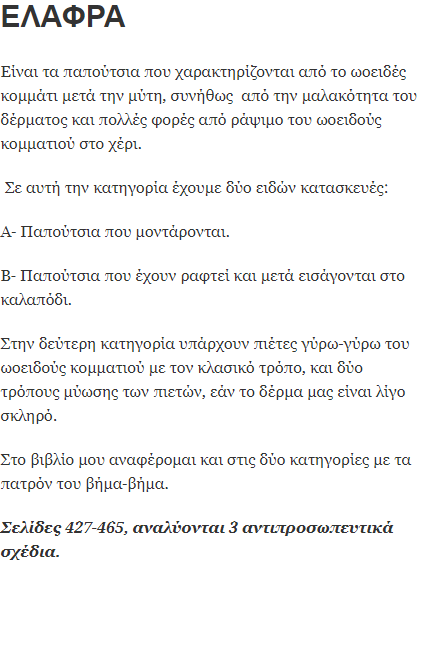
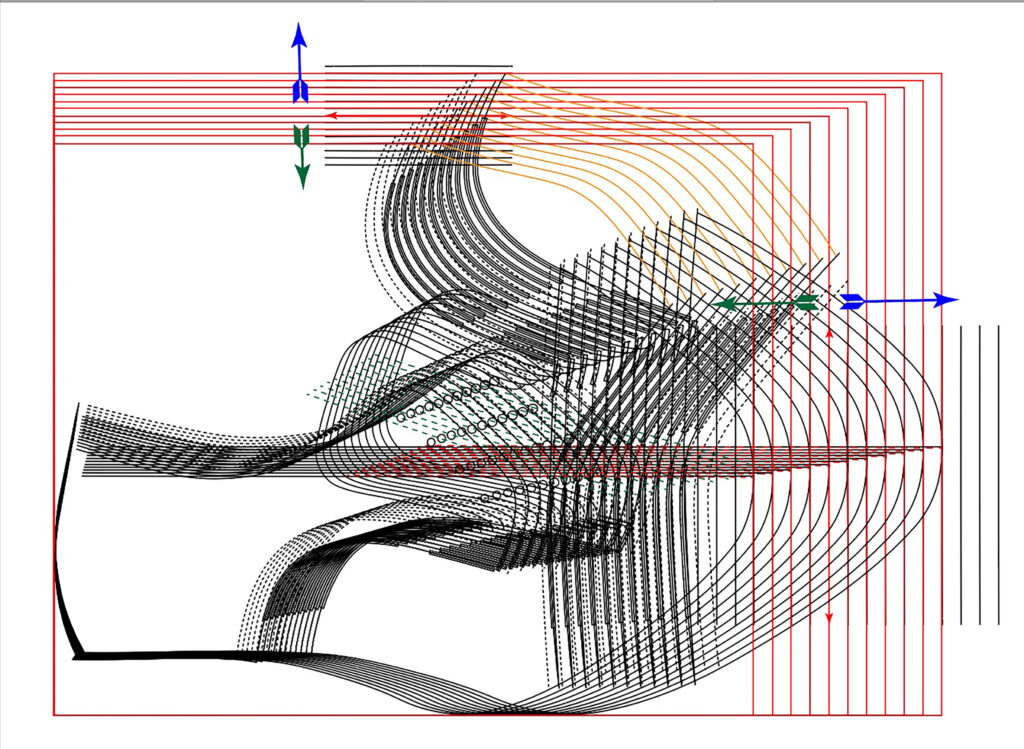
Grade
A big chapter on shoe design is the actions that need to be taken, so that our initial pattern can be scaled up and down and different shoe sizes are created. All this procedure is called Grade.
In my book I refer to all the metric systems (French-English-American) with illustrations of the variations of the parts of the shoe. At the same time, I present my own version of Grade, for the three systems, correcting them in order to deal with the distortion that arises as the sizes fluctuate from the original base.
A base accompanied by its patterns should not be distorted and appear neither narrow and short in height, nor wide and tall, if its size increases or decreases.
Finally, in this book, I teach how to design shoes and their patterns with Grade, by using a simple Illustrator Design Program. This is not a specialized shoe software including automations created for shoe design; some people may be completely satisfied by it, though.
Pp 466-504.

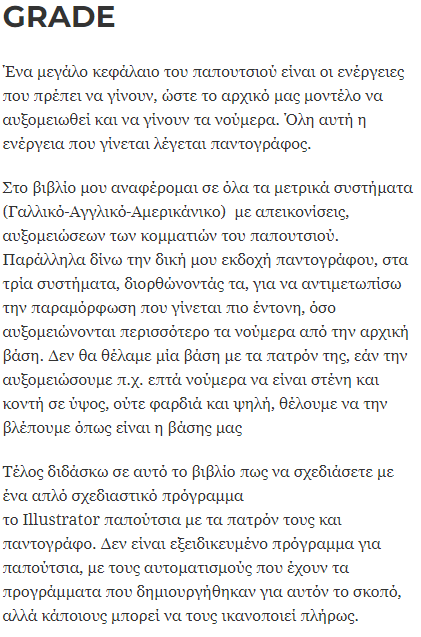
 Bulgarian
Bulgarian Chinese (Simplified)
Chinese (Simplified) Dutch
Dutch English
English French
French German
German Greek
Greek Italian
Italian Japanese
Japanese Spanish
Spanish Turkish
Turkish